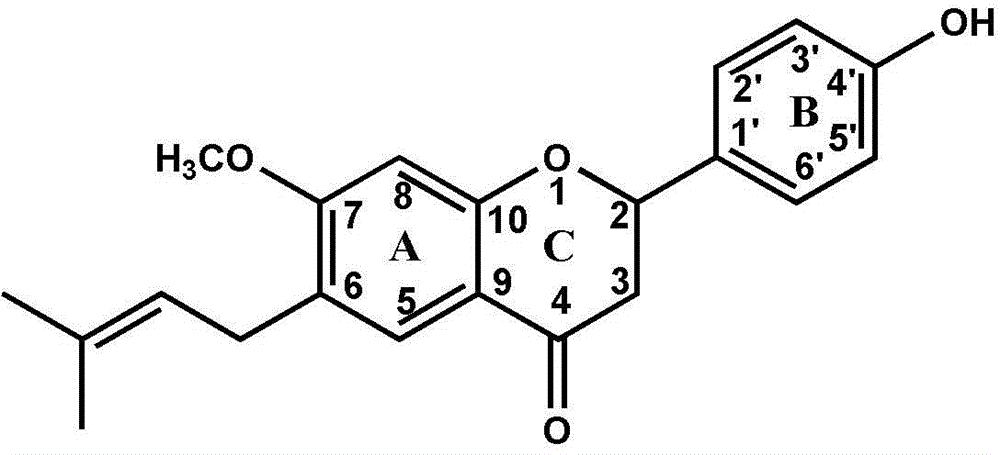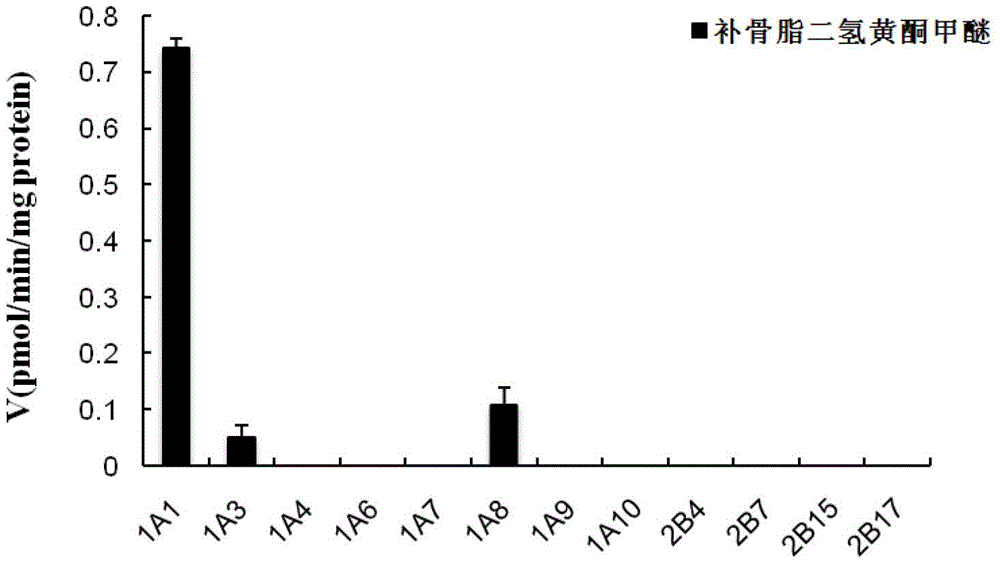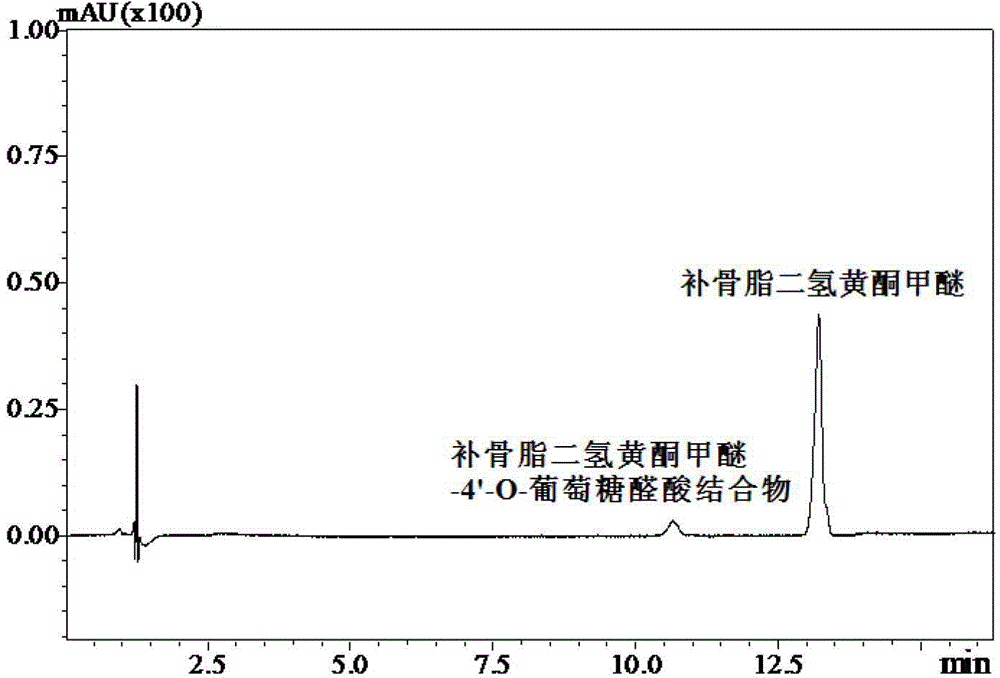Specificity probe zymolyte of glucuronic acid transferase UGT1A1 and application
A technology of glucuronic acid and probe substrates, applied in the field of medicine, can solve the problems of use, cytotoxicity, and inability to probe in vivo, and achieve high safety, sensitive detection, and good safety effects
- Summary
- Abstract
- Description
- Claims
- Application Information
AI Technical Summary
Problems solved by technology
Method used
Image
Examples
Embodiment 1
[0031] Example 1. Psoralen dihydroflavone methyl ether is used for the quantitative determination of the enzyme activity of UGT1A1 in the recombinant single enzyme
[0032] (1) Prepare 190 μl UGT metabolic reaction system in advance, including Tris-HCl buffer (50mM) at pH 7.4, 5mM MgCl 2 , recombinant human UGT1A1 (0.05mg / ml), the final concentration of psoralen flavone methyl ether is 25μM, pre-incubated at 37°C for 3 minutes;
[0033] (2) Add 10 μl of 40 mM UDPGA (final concentration 2 mM) to the reaction system to initiate the reaction;
[0034] (3) After 30 minutes, add 200 μl of ice-cold acetonitrile and shake vigorously to terminate the reaction;
[0035] (4) Use a high-speed refrigerated centrifuge at 4°C, 20,000×g, after high-speed centrifugation for 20 minutes, take the supernatant for UFLC-UV detection;
[0036] (5) Quantitative detection of psoralen dihydroflavone methyl ether and its glucuronidation products at 320nm. The maximum catalytic rate of recombinant hu...
Embodiment 2
[0037] Example 2. Psoralen dihydroflavone methyl ether is used for quantitative determination of the enzyme activity of UGT1A1 in human liver microsomes
[0038] (1) The reaction system is the same as above. The UGT1A1 in the system was replaced with human liver microsomes, the protein concentration of the microsomes was 0.25 mg / ml, and the reaction time was 30 minutes.
[0039] (2) After high-speed centrifugation at 4°C and 20,000×g for 20 minutes, take the supernatant for UFLC-UV detection;
[0040] (3) Quantitative detection of psoralen dihydroflavone methyl ether and its glucuronidation products at 320nm. The maximum catalytic rate of UGT1A1 was measured to be 8.3 pmol / min / mg in human liver microsomes.
Embodiment 3
[0041] Example 3. Correlation analysis between psoralen dihydroflavone methyl ether and bilirubin metabolism
[0042] Using psoralen dihydroflavone methyl ether and bilirubin as substrates, 12 human liver individual samples were incubated for UGT metabolic reaction, and the reaction incubation conditions were the same as those in Examples 1 and 2. The generation rate of psoralen dihydroflavone methyl ether / bilirubin UGT metabolites in each case of human liver microsome incubation system was measured, and the generation rate of psoralen dihydroflavone methyl ether / bilirubin UGT metabolites was The horizontal and vertical coordinates were plotted, and linear regression analysis was performed on the formed scatter points. The r value obtained was 0.92, suggesting that psoralen flavone methyl ether / bilirubin has similar liver metabolic enzymes and similar contribution to UGT1A1 metabolism Rate.
PUM
| Property | Measurement | Unit |
|---|---|---|
| Protein concentration | aaaaa | aaaaa |
Abstract
Description
Claims
Application Information
 Login to View More
Login to View More - R&D
- Intellectual Property
- Life Sciences
- Materials
- Tech Scout
- Unparalleled Data Quality
- Higher Quality Content
- 60% Fewer Hallucinations
Browse by: Latest US Patents, China's latest patents, Technical Efficacy Thesaurus, Application Domain, Technology Topic, Popular Technical Reports.
© 2025 PatSnap. All rights reserved.Legal|Privacy policy|Modern Slavery Act Transparency Statement|Sitemap|About US| Contact US: help@patsnap.com



